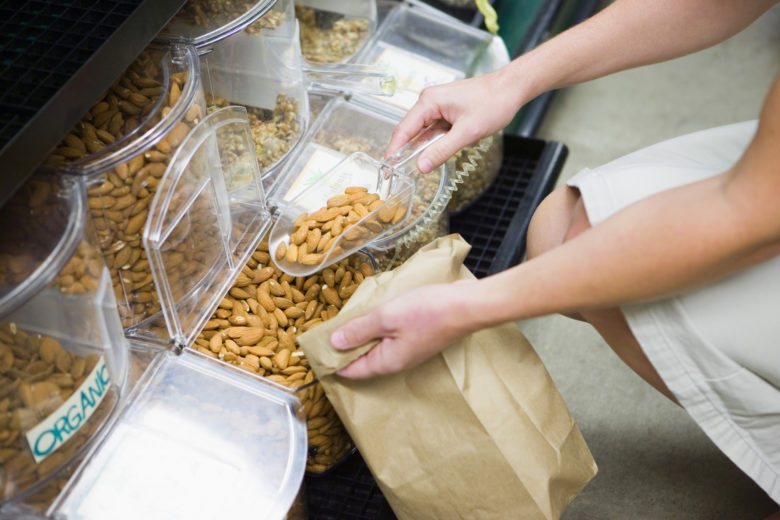
Once upon a time, the term “bulk aisle” conjured images of bins filled with oats and granola. Today, the grocery store’s bulk bin aisle is a place to discover new foods and ingredients without having to purchase more than needed.
Despite their name, bulk bins allow shoppers to buy a little, a lot or any amount in between. This flexibility, with an ever-increasing array of choices, has caused steady growth in bulk bins over the past decade. Interest has especially ramped up in the last five years, says Bart McKnight, a founding member of the Bulk Is Green Council (BIG), and natural category manager at Trade Fixtures in Little Rock, Ark.
Driving the bulk bins trend are health-, price- and environment-conscious consumers who see it as a means to control food expenses, minimize waste, limit trash from packaging and pay less for organic options.
For a large family, the bulk aisle can be the place to stock up on foods used often in the household. Smaller families, couples and single people can buy only as much as they need, says Janet Little, MPA, director of nutrition at Sprouts Farmers Markets in Phoenix, Ariz. While savings vary by store, region and item, shoppers may spend less on bulk foods compared to packaged equivalents. Little says Sprouts’ price comparisons found savings of 15 percent to 20 percent when compared to packaged foods. Nuts are one of the most popular bulk items, with savings of up to 40 percent.
A 2012 study from Portland State University in partnership with BIG found consumers can save an average of 89 percent by shopping in the bulk aisle for organic coffee, tea, pasta, beans, spices, dried fruit, nut butters, flour and grains. Researchers also noted significant environmental benefits; for example, 240 million pounds of foil packaging could be saved from landfills if Americans purchased all their coffee in bulk for one year, according to the study.
Bulk aisle offerings vary from store to store and with shopper preferences, says Allison Kuhn, RD, LD, corporate dietitian at Kroger. “Depending on location, our shoppers may see bulk bins containing several types of nuts and seeds, snack items, couscous, grains such as quinoa, cereals, trail mixes and candy-type items,” she says. Snacks are particularly popular. Nicole Arnold, RD, LD, a dietitian at Hy-Vee in West Ames, Iowa, says customers frequent bulk bins for chocolate-covered pretzels and raisins, honey-toasted almonds, unsweetened coconut, trail mixes, nuts and freshly ground nut butters.
Seasonal products are rotated throughout the year. “As people’s palates have become more educated, they’re looking for a variety of foods,” Little says, which is reflected in requests for new items, including foods high in fiber and protein, more organic options and more variety in flavors.
While nuts, seeds, flaxseed and trail mixes continue to be universally loved, bulk bins also offer a place for customers to find unfamiliar ingredients they want to taste for the first time or experiment with in the kitchen: a tablespoon of saffron to perfume a soup or a cup of gluten-free banana flour to make homemade waffles.
